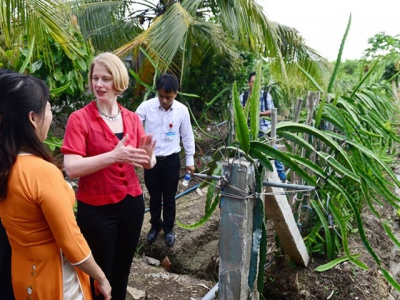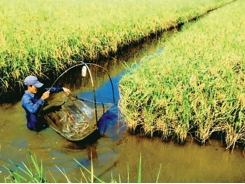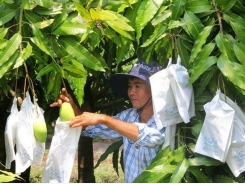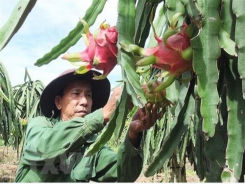New Zealand helps Việt Nam add value to its dragon fruit

Ho Chi Minh City — Achieving excellence at every step in the value chain is critical to the long-term commercial success of premium fruits, experts have said.
Wendy Matthews, New Zealand's ambassador to Việt Nam visits a dragon fruit farm in Tiền Giang Province. — Photo zing
Speaking at a national workshop in HCM City yesterday (June 4) on the successful commercialisation of premium fruit varieties, Trần Kim Long, director of the Ministry of Agriculture and Rural Development's department of international cooperation, said dragon fruit is one of the country’s nine key fruit varieties and is highly competitive in the global market.
Việt Nam has nearly 53,000 hectares under the fruit, mainly in Bình Thuận, Long An and Tiền Giang provinces, with Bình Thuận accounting for more than half.
Việt Nam’s fruit and vegetable exports were worth US$3.8 billion last year, with the former accounting for 80 per cent.
The ministry seeks to grow fruit exports to $5 billion by 2020, and to fulfil the target has taken various measures to improve farming methods and explore international markets, Long said.
The “New Premium Fruit Variety Development Project” funded by the New Zealand Aid Programme has developed new farming methods for dragon fruit, he said.
The project that began in 2013 has developed a number of promising new dragon fruit varieties, he added.
The six-year NZD$8.1 million (US$5.6 million) project has been carried out by the New Zealand Plant and Food Research Ltd in partnership with Việt Nam’s Southern Fruit Research Institute and Sub-Institute for Agricultural Engineering and Post-Harvest Technology.
Trần Thị Oanh Yến, deputy director of the Southern Fruit Research Institute, said the dragon fruit industry is growing rapidly, resulting in huge potential for novel proprietary varieties.
“We are on track to release a new cultivar by the end of 2020.”
Infrastructure and capabilities developed through this project provide a solid platform for investment by Vietnamese businesses, she said.
Capability and technologies developed at her institute can be applied to the breeding of other crops, she added.
Experts said the project has developed farming methods that have doubled yield and new post-harvest washing and cooling techniques that have reduced fruit damage and extended shelf life.
Its robust and innovative research has reduced the impact of canker disease and resulted in less chemical use, they said.
“This is one of New Zealand’s signature projects in Việt Nam because it successfully brings together New Zealand’s agricultural expertise with one of Việt Nam’s most iconic products, the dragon fruit,” Wendy Matthews, New Zealand's ambassador to Việt Nam, said.
At the workshop, New Zealand businesses shared their experiences in how to fully leverage high-value fruit varieties based on successful New Zealand models for commercialisation, intellectual property protection and branding for apples and kiwifruit.
“New Zealand’s fruit industry has invested both in robust systems across the value chain and in research to develop the best possible varieties.” Matthews said.
“By sharing New Zealand’s successful models, we hope to assist Việt Nam’s fast-growing premium fruit industry."
Có thể bạn quan tâm
Phần mềm

Phối trộn thức ăn chăn nuôi

Pha dung dịch thủy canh

Định mức cho tôm ăn

Phối trộn phân bón NPK

Xác định tỷ lệ tôm sống

Chuyển đổi đơn vị phân bón

Xác định công suất sục khí

Chuyển đổi đơn vị tôm

Tính diện tích nhà kính

Tính thể tích ao hồ



 New Zealand helps Vietnam improve value chain steps…
New Zealand helps Vietnam improve value chain steps…  New Zealand supports Vietnam’s dragon fruit exports
New Zealand supports Vietnam’s dragon fruit exports